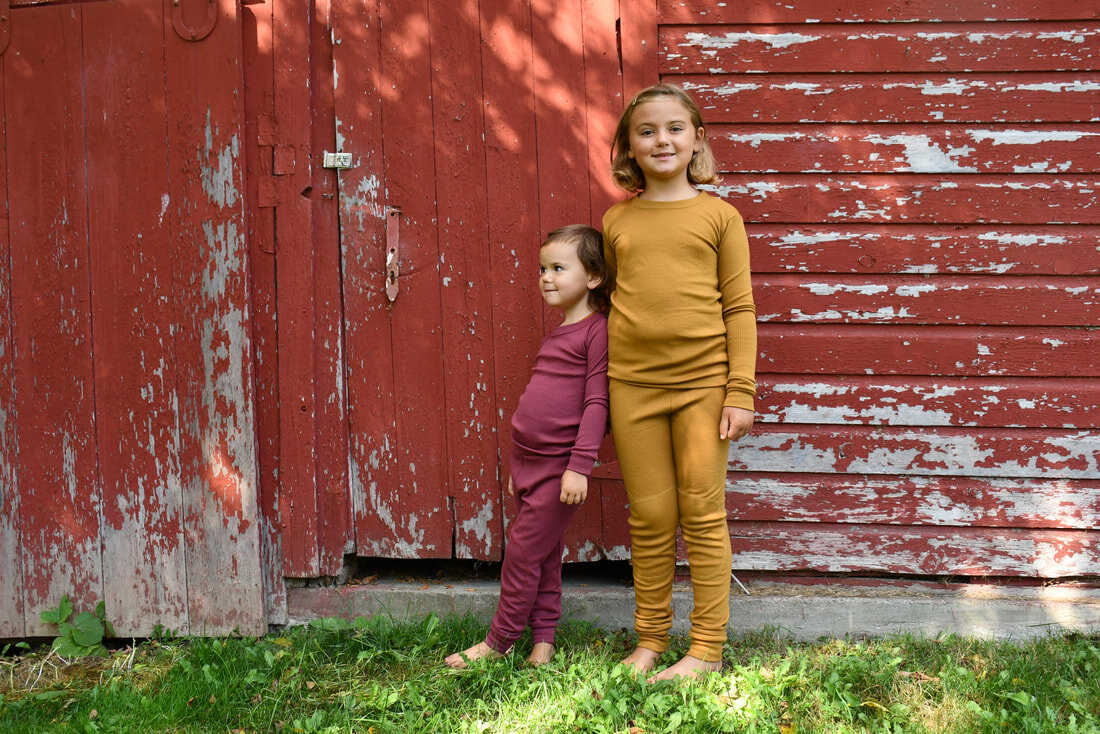The Science Behind How Wool Keeps Us Warm in the Winter
I first learned about a wool base layer from my midwife. She mentioned ‘woolens’ in a passing comment during a prenatal appointment and her comment piqued my interest. One of her sons hadn’t been feeling well and so she told me she was “headed home to put him in his woolens”. I was baffled. How could clothing possibly affect health? Up until that point I purchased clothing solely based on convenience and price, without considering anything else; I had never even heard of woolens.
In the years that followed, I began to learn more about the fabrics that touch the skin of my children. Our skin is our largest organ and since it is porous it absorbs whatever we put on it. Dressing our kids in natural fibers versus synthetic fibers (made entirely from chemicals) will have a positive affect on health and wellness. Additionally, the clothing materials we choose make a significant impact on comfort level when we head outside.
Children desperately need time in nature for proper development and they need this outdoor time year round. In many areas, the weather can seem like an insurmountable barrier, especially as temperatures plummet in the fall and winter. We invest in warm coats and waterproof boots but over the past decade we’ve found that our very best investment to keep our family outside and active year round has been a merino wool underlayer for each child.
What’s so special about merino wool? While wool has a misconception of being only for cold weather, merino wool is actually a temperature regulator thanks to its natural moisture wicking and breathability. Here is where the science come in! The wool hair fibers are a coiled shape and in between each of the microscopic coils moisture gets trapped. Quite incredibly, wool can absorb 30% of its weight in water without feeling wet at all; and what happens next is astounding. In cold weather, during this process of trapping the moisture, wool actually generates heat. The way it works is the hydrogen bond from the water breaks off and binds to the chemical structure of the fibers. When that happens, small amounts of heat energy are released and the natural crimp in the fibers creates tiny pockets of trapped warm air next to the skin (and in warm weather, merino releases excess moisture to keep the wearer cool and dry).
Long before I knew any of the science, I would notice how warm our kids bodies were when they had on a wool base layer. I would touch their little bellies after a frigid day outside and it felt like I'd put my hands in a warm oven. This only happened when they were wearing wool because other fabric fibers are shaped differently. There isn’t another fiber on earth, including man-made synthetic options like fleece or polyester, that are warmer than wool. Take cotton for instance. Cotton garments tend to be less pricey and more readily available BUT cotton will soak up moisture like a sponge and will stay sopping wet for an incredibly long time. Any child who is outside and moving will begin to perspire and when they do, all of the moisture in their cotton garment will pull immense amounts of heat away from the child's body.
If a child is wearing wool, that garment will keep them dry while also insulating their warmth. If a child is wearing cotton, however, that garment will actually steal heat. Active outside children need wool against their bodies. And with merino wool, it is super soft with no itch so it is made to be worn next to the skin!
Eventually, we adopted the strategy of our midwife. Due to lots of fresh air and outside movement that keeps the lymphatic system moving, our kids don’t get sick very often. But when they do, we always make sure they wear their woolens. When kids wear wool their little bodies don’t have to work as hard to keep themselves warm and instead their energy is funneled toward healing. This decreases the length of time they are sick - and it is a very noticeable difference!
There are tons of reasons to invest in a merino wool underlayer for your children, especially if you are headed into the fall. When the temperatures begin to drop, wool makes outdoor play much more accessible and tolerable. Remember it’s helpful for overall health as well - triple bonus!
We have five children and have bought woolens from many different companies over the years. The company that stands out well above the rest is Chasing Windmills Kids. Their wool clothing is made of incredibly soft merino wool. According to their website, “Merino sheep produce the finest, softest, and most adaptable wool anywhere in the world. There’s no prickle or itch to merino wool.”
The clothing from Chasing Windmills Kids is comfortable, durable, affordable, made ethically and sustainably, and also absolutely adorable.






